Best Ancient Cities in Turkey to Visit

Ancient cities in Turkey often captivate visitors with their remarkable preservation and historical significance. Turkey, which lies as a gateway between Europe and Asia, is home to a diverse history that dates back more than 10,000 years. Anatolia (modern Turkey) has seen the rise and fall of many great civilizations and empires during its extensive past, which have left a mark that still affects the world today.
Turkey's ancient sites range from dramatic Roman metropolises to mythological cities immortalized in literature. Ephesus provides dramatic insight into the Roman Empire and is one of the most impressive ancient cities of its time. Troy, however, is a mythological city that has gained fame through the Trojan War in Homer's Iliad. There are also sites such as Hierapolis-Pamukkale that offer a rare double whammy of natural and historical attraction, as a UNESCO Heritage Site.
This guide presents the most impressive ancient cities of Turkey, their historical importance, their architectural features, and also practical information for those who are planning to visit on their Turkey tour.
Best Ancient Cities in Turkey
Turkey is dotted with amazing ruins that whisper the stories of centuries-old civilizations. Roman cities, Greek coastal towns, and other archeological wonders bear witness to the country's position as a crossroads of history.
Ephesus
Turkey's most renowned and well-preserved archeological site is perhaps Ephesus, a blend of Greek, Roman, and early Christian cultural elements dating back to the 10th century. The stunning Library of Celsus and the Temple of Artemis are the most famous landmarks within this ancient marvel.
This once great city, Ephesus, features a 25,000-seat theater, richly decorated terraced houses, and marble streets that have been polished to a high sheen. Amazingly, it is only estimated that 15% of the city has been excavated, which means that there is much more waiting to be discovered below the surface.
Located 60km south of İzmir airport and 20km northeast of Kuşadası, this UNESCO World Heritage Site is easily accessible and should be included in your Turkey travel package. The Marble Sacred Street, the Commercial Agora, and the lavishly decorated private houses that offer glimpses into ancient daily life.

Customize Your Dream Vacation!
Get in touch with our local experts for an unforgettable journey.
Plan Your Trip
Troy
Perched on the Hisarlik plains of northwest Turkey, the ancient city of Troy is where history and myth collide. Immortalized in Homer's Iliad, Troy was first settled in 3600 BC and was a walled city by 3000 BC. It was destroyed and reconstructed many times over 4,000 years, creating nine distinct layers, each telling a different chapter of its history.
During the Late Bronze Age, it was Wilusa and a vassal of the Hittite Empire. Greek and Roman cities later (Troy VIII-IX) turned the site into a tourist destination, honoring its mythic fame.
Visitors can today stroll through these strata of time, envisioning the battle of heroes and the drama of the Trojan War. Added to the UNESCO World Heritage list in 1998, Troy is more than a historical site, it's a timeless stroll through one of the world's greatest legends.

Pergamon
Rising dramatically above the modern town of Bergama, the remains of the city of Pergamon offer a vertiginous journey into the glory of the Hellenistic world. Just 16 miles from the Aegean Sea, this once-great city was at its peak under the Attalid dynasty, who transformed it into a political and cultural powerhouse.
Climb the steep hill where the rulers built their fortress and palace and take in panoramic views once enjoyed by royalty alone. Walk through the remains of its legendary theater, carved into the hillside, and imagine performances with a sky and sea backdrop. Pergamon's fame spread throughout the ancient world, thanks in part to its giant library, second only to Alexandria's.
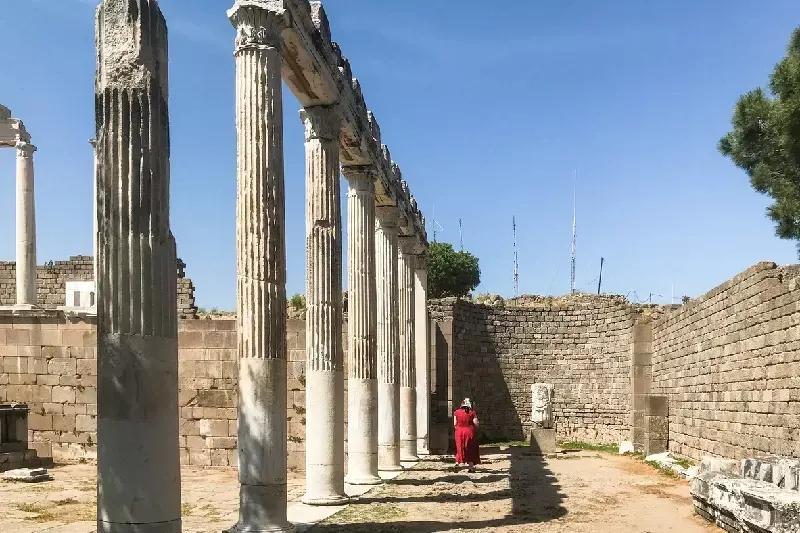
Hierapolis
Near the natural marvel Pamukkale, Hierapolis was founded in 190 BC. Hierapolis was renowned for its hot springs, high-quality woolen textiles, and as the birthplace of Stoic philosopher Epictetus. For at least the 2nd century BCE, the hot springs have been used as a spa, welcoming many visitors throughout the centuries.
Hierapolis flourished under Roman rule, reaching its peak of importance in the 2nd and 3rd centuries AD. Today, visitors get to stroll over its perfectly preserved theater, expansive necropolis, and Martyrium of St. Philip, a priceless Christian pilgrimage destination since the 5th century. The distinctive combination of spectacular natural scenery and complex canal systems that make this UNESCO World Heritage Site truly extraordinary.
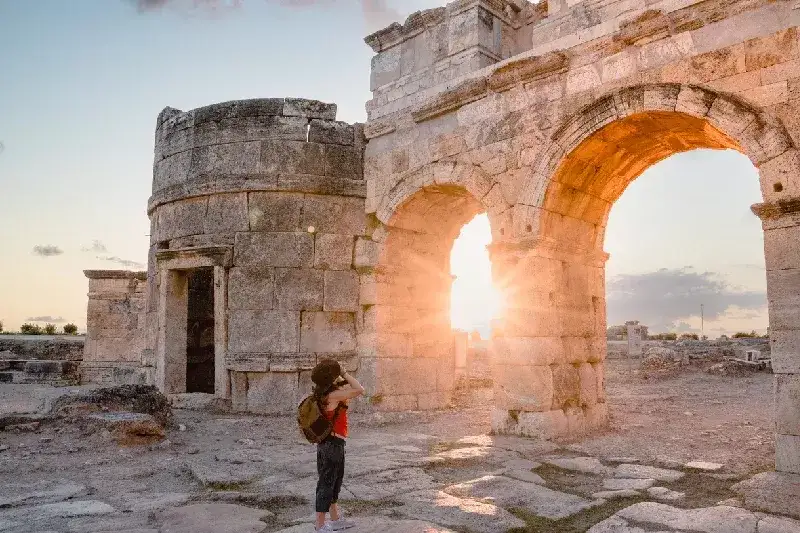
Sagalassos
Tucked into the soaring slopes of the Taurus Mountains, Sagalassos feels like a secret city suspended in time. Often dubbed "Turkey's second Zeugma," this antique Roman town of the province of Pisidia is situated between 1,450 and 1,700 meters of sea level elevation, with stunning views and an unexampled sense of remoteness.
One of the Pisidian cities of old, Sagalassos flourished in the Hellenistic, Roman, and early Byzantine periods. Since massive-scale excavations began in 1990, visitors can now walk along beautifully preserved remains, fountains, theaters, bathhouses, and temples, recalling the glory that once existed there.

Assos
Situated high over the Aegean, Assos is a flashback from an epic lost in time. As you wind your way up the ancient volcanic slopes, the scent of thyme and sea breeze fills the air. The vista alone is worth the journey, crystal waterfalls stretching out forever below, framed in ancient stone walls and wild olive trees.
At the top is the Temple of Athena, its columns glinting in the sunlight just as they did back in 530 BC. It’s easy to imagine Aristotle here, walking these same paths, teaching under the sky in the academy he founded. With city walls strengthened by eight towers and streets untouched by time, Assos is a perfect harmony of nature, philosophy, and history.
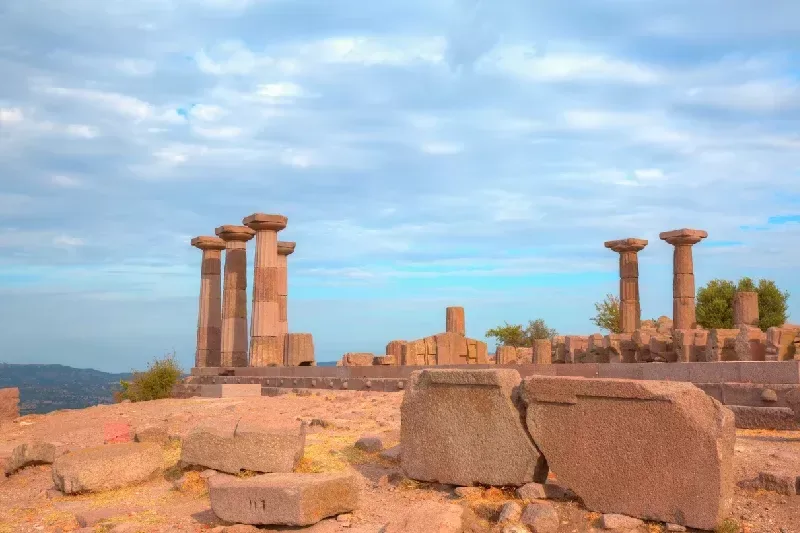
Perge
Step into Perge and you’re stepping into the heart of Roman engineering and elegance. Just east of Antalya, this sprawling ancient city surprises with its grandeur. Widespread avenues are flanked by columns and shadowed by the foundations of dwellings, shops, and ceremonial gates. A wide water channel, once lined with running fountains, brings cool respite from the region's dryness. Climb to the huge theater and imagine the roar of 15,000 spectators, or walk the ruins of the agora and gymnasium. With early Christian associations—St. Paul walked here—Perge is imbued with spiritual depth and ancient beauty.
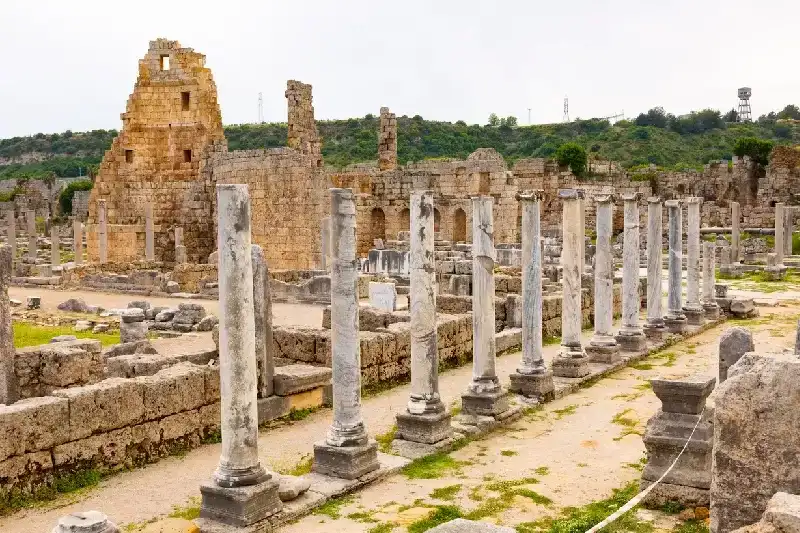
Side
In Side, the past blends seamlessly with the present. Ruins rise from the heart of a modern seaside town, where ancient stone arches frame cafes and souvenir shops. But step beyond the bustle, and you’ll find yourself face-to-face with some of antiquity’s finest relics. The Roman theater still commands attention, while the seaside temples of Apollo and Athena create one of Turkey’s most iconic sunset scenes. As waves crash beside weathered columns, it’s impossible not to feel swept up in the romance of this coastal treasure.
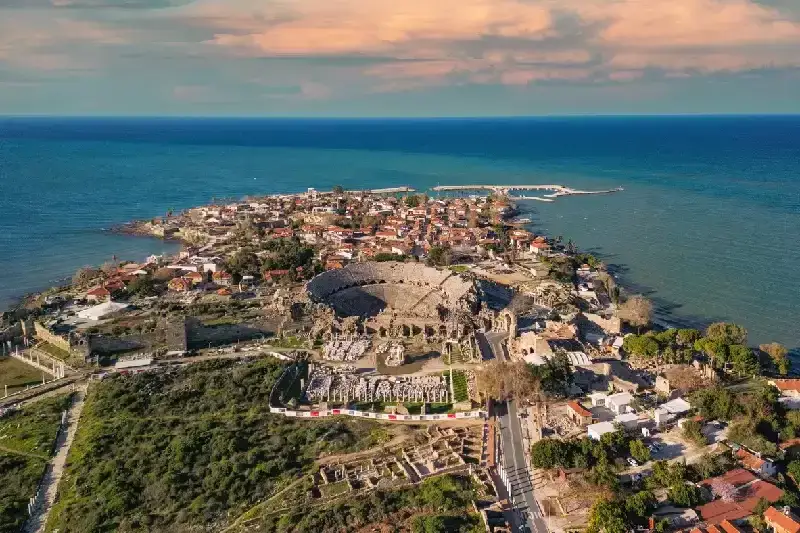
Miletus
Serene and Peaceful, Miletus rewards seekers of wisdom along the way. Once the greatest of the cities of the Greeks, it bred philosophers like Thales and Anaximander, fathers of Western philosophy. Even though its harbors are now filled with silt, its legacy still flows down the centuries. Stroll along the great theater, tour the bath complexes, or stroll along the holy road to the Temple of Apollo at Didyma. In Miletus, ideas were born—and in the ruins, their whispers can be heard.
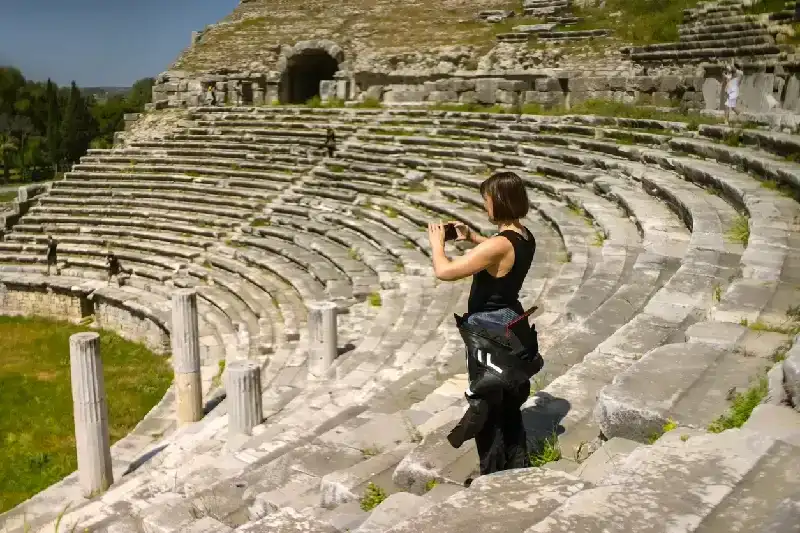
Tips To Visit for First Time
Preparing for a journey through Turkey's archeological wonders requires thoughtful planning to maximize the experience.
Best Time to Visit
The ideal months to visit these cities are April, May, September, and October when the temperature ranges from 68°F to 86°F. These shoulder seasons offer pleasant temperatures for exploring ruins without the fierceness of the heat or the throngs of people.
For summer travelers, an early arrival is essential. Most sites open at 8:00 AM, and it is possible to explore them before the noon heat becomes intense. During winter months (November to March), temperatures significantly cool but with the benefit of almost empty sites.
What to Wear
Practical attire makes a significant difference when exploring these ruins full of marble. Marble retains heat and attracts sunlight, and therefore loose, light clothing is essential. A hat, sunglasses, and high-SPF sun block are essentials, particularly during the summer season. Comfortable shoes with a good grip are essential, sneakers or hiking boots best on ancient stone paths that become slippery.
Guided Tour
First-time visitors might consider hiring a licensed guide, particularly at historically complex sites. Guides offer cultural context that brings old rocks to life and manage crowded areas efficiently. They also tend to handle practicalities like ticket purchasing so that visitors can avoid lines. Explore our guided Turkey Tours.
Photography Tips
Photography enthusiasts should research site-by-site rules beforehand because there are sites that restrict indoor photography.
Turkey is home to far more ancient cities than you might expect, from lesser-known gems like Laodicea, Patara, and Termessos to the mystical heights of Mount Nemrut. Scattered across the country, these cities reflect a deep, multi-layered history that spans thousands of years, each one offering its own unique story, atmosphere, and architectural wonder.
FAQS
Q1. How many ancient cities are there in Turkey?
Turkey is home to over 100 major ancient cities, with thousands of archaeological sites scattered across the country.
Q2. Is Ephesus worth visiting?
Absolutely. Ephesus is one of the best-preserved ancient cities in the world. Highlights include the Library of Celsus, Great Theatre, and Terrace Houses, offering a vivid glimpse into Roman urban life.
Q3. What is Pergamon famous for?
Pergamon is known for its steep hillside theater, Altar of Zeus, and once housing one of the largest libraries of the ancient world, second only to Alexandria. It was a major center of learning, medicine, and culture during the Hellenistic period.
Q4. What is Hierapolis called today?
Hierapolis retains its ancient name and is located near Pamukkale. The two form a UNESCO World Heritage Site, known for ancient ruins and natural travertine terraces.
Q5. What is the legendary city in Turkey?
The most legendary city is Troy, made famous by Homer’s Iliad. Located in northwestern Turkey, it blends myth and archaeology, revealing layers of history dating back to 3000 BC
Q6. What is the best time to visit ancient cities in Turkey?
The best time to explore Turkey’s ancient cities is during the spring (April–May) and autumn (September–October). During these months, the weather is mild, ideal for walking through open-air ruins.
Check out our Turkey travel packages for flexible options that let you discover timeless sites!
Related Articles
Keep the inspiration going with these handpicked travel reads.
